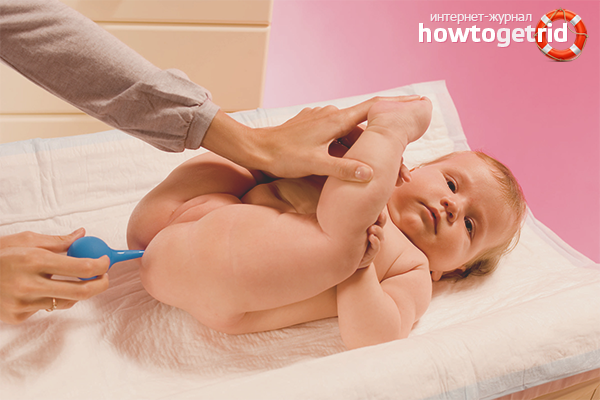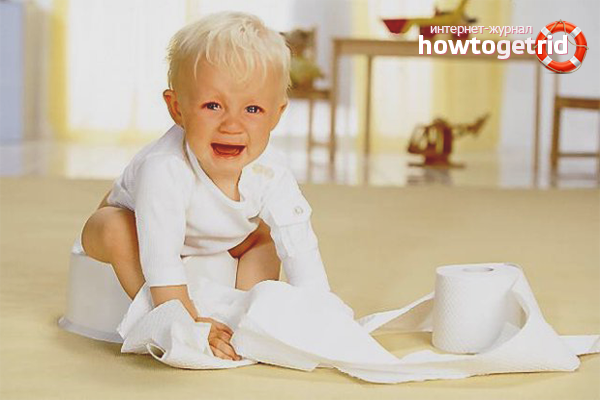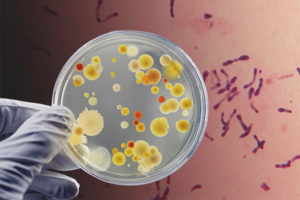The content of the article
The body of the child is perfect and regulated independently. Immediately after birth, the baby stops receiving food and oxygen through the umbilical cord and begins to breathe on its own. The same thing happens with the digestive organs - they begin to work autonomously, the child has the first bowel movement - meconium. But when something goes wrong, there may not be a chair. Why a baby can have constipation, what is its cause and in what cases an enema can be made, we will talk in more detail.
Constipation in infants
In the first days of life, a child usually does not have problems with stools. Children in their first month of life defecate regularly, ideally after each meal. A baby can poop up to 12 times a day - this is the norm. Over time, the number of bowel movements decreases. At three months, the baby can empty up to three times a day, if the baby's stool happens more often - it may have digestive problems.
But young mothers are more likely to experience constipation rather than diarrhea. Sometimes it happens that babies breastfeeding for a long time do not have a chair, while they feel normal. Pediatricians argue that this happens with the full assimilation of breast milk. That is, the baby eats well, milk is completely absorbed, leaving behind a small amount of waste after the breakdown of the product. In such cases, the child may not empty up to 7 days, provided that he feels well. It should be noted that this applies only to breast milk. A baby fed should be emptied at least every other day. The following manifestations of crumbs may indicate constipation.
- The baby cries a lot and for a long time.
- He has a lot of gas, his stomach is swollen, sometimes even painful.
- The child with constipation is pushing, groaning, blushing. During this, often small children pull their legs to their stomach.
- With severe constipation, the child may refuse to eat, sleep poorly, and behave uneasily.
- After defecation, the bowel movements seem much thicker and even harder than usual.
If you notice such manifestations in a child, you need to try to help the baby ease his condition. In this case, you need to make an enema crumbs.
How to make an enema for a newborn
Enema is not only used to relieve the bowel movement during constipation. A cleansing enema is a great way to rid your body of toxins after poisoning. In addition, an enema with drugs is used for a more effective and quick treatment when the condition of the child requires early action. But all these cases should be under the supervision of a doctor. Home enema can be delivered only in case of constipation. And then, remember that an enema is a one-time help. If the baby has broken stool, you must definitely show it to the doctor to find out the cause of constipation and normalize the intestinal microflora with the help of medications. But when the baby cries and needs help here and now, you need to act immediately.
- The first thing you need is a small rubber bulb. She should have a thin and short tip. Best if it is rubber. If the tip is plastic, carefully feel it with your fingers so that it does not have cracks, burrs or other sharp parts. The rubber bulb must be thoroughly washed with baby soap and then filled with hot water to disinfect the inside of the item. The tip needs to be lowered in boiling water for a few seconds.After cleansing, make sure that there is no hot water left in the pear, otherwise you may get a mucous burn.
- For a newborn child, the limit of the volume of infused fluid is 30 ml. At three months, the baby can pour no more than 60 ml, in six months - 90, in 9 months - about 120 ml of liquid. Instead of water, you can use a weak decoction of chamomile - it will calm the intestinal mucosa. It is very effective to make an enema with a decoction of fennel, it eliminates flatulence and promotes the passage of gases that cause the child discomfort.
- Before you give your child an enema, wash your hands and treat them with an antiseptic.
- So, first you need to prepare a place for the child. Lay a diaper and a thick oilcloth on the table, on which the baby will do all his work. Put the baby on his back or on the side and press his knees to his chest.
- Carefully dilute the buttocks and lubricate the anus with petroleum jelly or boiled vegetable oil. You should also generously lubricate the tip of the pear after you have collected the right amount of liquid into it. Water or a weak broth should be warm and comfortable for the body.
- Gently, with a scrolling motion, insert the tip of the pear into the colon no more than 1-1.5 cm. After that, push the pear so that the liquid pours from the pear into the intestine. Do this very slowly so as not to harm the internal organs of the child.
- So that the baby does not scream and do not worry, he needs to be reassured with affectionate words. It will be good if someone keeps the child in the process of fluid infusion. After all, one sudden movement or push can lead to injury to the colon.
- When the entire volume of fluid enters the body, carefully remove the pear in a compressed form and pinch the buttocks of the baby so that the water does not go out ahead of time. Wait at least 5-10 minutes. When the baby begins to push hard, you can take him with his back to him and press his knees to his tummy. In this case, the bowel movement will be more successful. At the same time, hold the child over a pot, basin or oilcloth to make it easier to clean.
After a bowel movement, the child will calm down, can finally fall asleep normally, stop crying. Remember, an enema is often not possible - water can wash the healthy intestinal microflora. Use an enema only as an emergency.
What to do with regular constipation in a newborn
If the baby cannot be emptied on its own, it may be worth adjusting the mother’s nutrition if the baby is breast-fed. Mom should eat more fruits and vegetables, lean on dried apricots and prunes. A portion of the nutrient laxatives passes into the baby's breast milk. After four months, the child can be given a weak decoction of dried apricots and prunes, one teaspoon each. Subsequently, with the beginning of feeding, the problem of constipation usually disappears due to the large amount of fiber and plant foods. If your child is suffering from constipation, start complementary foods with fruit and vegetable purees.
Sometimes a regular massage helps the child cope with constipation. Do circular movements of the abdomen in a clockwise direction, that is, in the direction of the movement of food in the intestine. Massage should be careful, but at the same time persistent enough. Such manipulations propel intestinal contents to a natural outlet. After the massage, you can speed up the process if you plant the baby over the pot, that is, keep the baby with his back to himself, pressing his knees to his chest. In this position, the baby will be much easier to empty.
But remember, all these measures are temporary in order to help the child relieve themselves here and now. This problem needs to be solved in a more serious way - to look for the cause of constipation, change the mother’s nutrition, try to solder the newborn with water, drink probiotics to restore intestinal microflora. The doctor will help you solve this problem, do not wait for another constipation, go to the reception.
Video: how to do an enema for kids












Submit